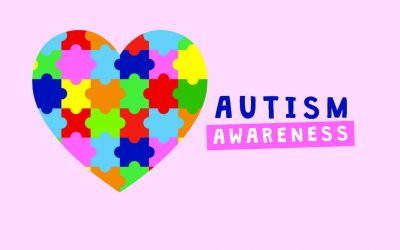Paper on Inclusion
Sherry Miller. MSHA, BSc.
(403) 238-2967 office
(403) 238-3629 fax
I. Inclusion
All children have the right to a quality education that provides them with a sense of belonging and acceptance in their community school that leads to personal growth, development, and success of the individual child.
We realize that recognition and acceptance of children with special needs/learning disabilities is a societal issue and that we need to embrace the opportunity to share in our joint responsibility. This responsibility includes assisting all children in their academic, social and behavioral learning so that they can become successful members of their community. Inclusion also engenders tolerance and understanding among all children and adults.
A. Inclusion Is Defined As Occurring When:
Child is visibly involved in the regular age-appropriate classroom
Child is meaningfully engaged in regular classroom activities (i.e. with curriculum, peers, and teacher)
Child is a successful participant in all aspects of school life, including but not restricted to lunchroom program, extra-curricular activities, etc.
Child’s program involves academic, learning behavior, and social skill development where no one skill supercedes the other
Child’s program is based on modification of the regular Program of Studies rather than on the development of an exclusive and separate program
Child is provided with necessary environmental adaptations needed to facilitate learning
Child’s program is based on their strengths and talents and areas of needs rather than a blanket diagnostic label
Child’s program incorporates speech-language, occupational therapy and behavior strategies, etc. suggested by REACH and external professionals
II. Roles and Responsibilities
Administration
Sets the tone in the school community for positive experiences with inclusion
Ensures provision of resources (i.e. professionals, materials) that can assist the child in successful inclusion
Facilitates creative and innovative solutions to ensure sufficient and timely support for the child, family, schoolmates, and the teaching team
Ensures staff members have the opportunities for specific courses/workshops on inclusion, curriculum modification, peer facilitation, specific disability of the student(s), etc. (priority shall be given to front line staff – teacher and educational assistant)
Facilitates and ensures seamless transition for staffing and ensures advance communication with family before staffing changes will occur
According to FOIP guidelines, ensures information about child will not be released without written consent of the parent
According to FOIP guidelines, ensures parent is provided with all information written about their child
Resource Teacher
IPP team member
Co-facilitator who ensures seamless transition for staffing
Knowledgeable and shares information on all services provision options (e.g. REACH, SHI, etc.)
Advocates on behalf of the child to secure necessary resources
Ensures utilization of resources (i.e. professionals, materials) that can assist the child in successful inclusion
Facilitates creative and innovative solutions to ensure sufficient and timely support for the child, family, schoolmates, and the teaching team
Provides support and on-going problem solving opportunities for parent and teacher.
Strategist
Knowledgeable about inclusion and the child’s disability
Provides school with materials, resources, and planning support for students in inclusion
Open to learning about the child’s strengths and areas of need
Collaborates with parents and other professional involved with the child
Forms meaningful partnerships with acknowledged experts in the community
Co-facilitator who ensures seamless transition for staffing
IPP team member
Facilitates incorporation of strategies/recommendations of the professionals (REACH, external)
Teacher
Facilitates the development, implementation, and evaluation of the student’s IPP program (may involve consulting with other teachers, professionals, parents who have specific knowledge about the child and about successful inclusion)
IPP team leader and evaluator
Facilitates educational experiences that match the student’s demonstrated levels and styles of learning and provides for their interest and motivation
Key contact person with the parents
Maintains regular meetings and communication with teaching team, parent, and external professional resources and REACH
All concerns regarding the student are initially communicated to the teacher AND then the teacher and parent determine which further team members need to be involved
Leads the problem-solving process when learning or behavior needs arise
Ensures a safe environment for all students
Ensures quality learning opportunities are created for all students
Supervises educational assistant
Co-facilitator who ensures seamless transition for substitute staffing
Maintains confidentiality
Incorporates strategies/recommendations of the professionals (REACH, external)
Educational Assistant
Assists the teacher in implementing daily lessons in accordance with teacher’s developed lesson plans (i.e. curriculum co-enactor as per IPP)
Employs teaching strategies for learning or behavior that ensure meaningful learning by the student
Shares responsibility for communicating and meeting with parents and other professionals
Creates adapted lesson materials for the student under teacher direction
Shares responsibility for problem-solving as learning or behavior needs arise
Incorporates strategies/recommendations of the professionals (REACH, external)
Assist child with personal care
Facilitates social and academic inclusion at school
Shares the responsibility to ensuring the safety of the student in the school environment
Maintains confidentiality
Co-facilitator to ensure seamless transition for substitute staffing
Shares all school material with home environment
Parent
Participates in selection process of educational assistant
Maintains regular meetings and communication with the teaching team, REACH and external resources
Active member in all aspects of the IPP development and revision
Shares responsibility for problem-solving as learning or behavior needs arise
Facilitates the access to other external professionals for the teaching team
Informs teaching team about their child’s strengths and areas of need
Provides teaching team with resource material on their child’s specific disability
Develops their own knowledge base about inclusion and their own child’s disability
Shares school material with home environment
Assists with school initiated learning assignments
Child’s advocate
Meets the basic needs of the child to come to school ready to learn
Assists with the parent volunteer program whenever possible
Supports the school/student services with the education of their child
Private Professionals (if applicable)
Contribute to IPP
Provides consultation and input to school as requested by parent and approved by school
Invited by parents with school permission to assist with problem-solving as learning or behavior needs arise
Inform teaching team how to use child’s strengths to address areas of need
Provide teaching team with resource material on the student’s specific disability
Committed to developing own knowledge base about inclusion and the student’s disability
Contacted and if appropriate, will device and supervise all restrictive practices (e.g. time out, removal from classroom to a separate area).
Provides one to one services to child and family as specified in employment agreement
To facilitate learning across settings, will communicate with educational assistant before transition to outside school programs
Incorporates school material in home environment
REACH
School IPP team member
Provides consultative services to the school as per contract which includes follow-up and evaluation
Contacted and, if appropriate, will device and supervise all restrictive practices (e.g. time out, removal from classroom to a separate area).
Student
Work to the best of her own ability
A right to feel safe and a sense of belonging
III. Priorities in the IPP
The emphasis of the IPP shall be on modification of the regular program of studies rather than on the development of an exclusive and separate program. It will consider all aspects of the child’s development. In the development of the IPP, the results of assessments carried out by school personnel, qualified consultants, medical agencies or any other appropriate information source will be utilized. Specific objectives of a child’s IPP may be supplemented by programming outside of the regular classroom.
Parents will be involved in the development of the IPP and their written approval must be obtained prior to the implementation of the program. Before the school provides a student with program modifications/environmental adaptations not cited in the IPP, it shall consult with the parents of that student in the development of the plan.
IPPs will be reviewed with parents and team members each reporting period and goals for the next school year will be delineated by June by the IPP team and must include goals in the following areas:
A. Academic
B. Learning Behavior
C. Social
D. Required Classroom/Curriculum Accommodations (examples below)
Simplify/enlarge material and reduce visual “noise” (excessive visual stimulation or distractions) to help with visual perception problems.
Develop and/or use stencils, charts, audio and video material, library books, adapted worksheets, cue cards, objects and pictures for rote practice/memorization.
Share school material ahead of time (e.g. songs, poems, and weekly goals) and replicate as required school environment and expectations at home (e.g. circle time, deskwork, crafts, and worksheets).
Use pictures to outline class routine, make activity choices during free play and to aid in transitioning throughout the day (e.g., its circle time now, I want to stop/need a break).
Use plan for establishing routine/sequence of specific events/tasks, expectations and to reinforce appropriate behavior.
Use Antecedent/Behavior/Consequence sheet daily to track and problem-solve around any inappropriate behaviors.
Incorporates multi-sensory teaching techniques, warm-up, and altering/calming, heavy work activities throughout classroom routine and encourage child to use appropriate sensory activities to improve ability to function in the classroom (identify and incorporate sensory based strategies to modify behavior)


